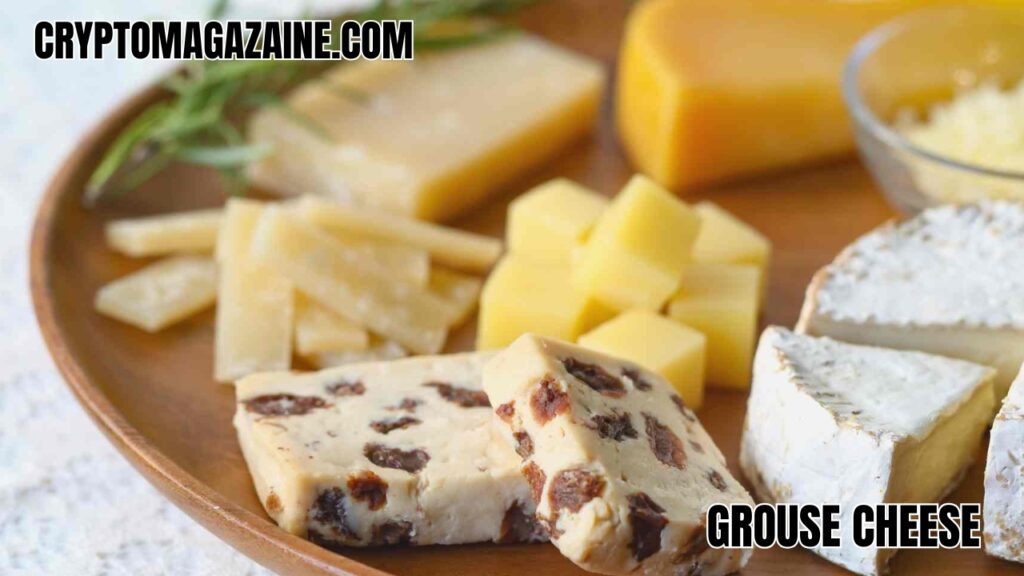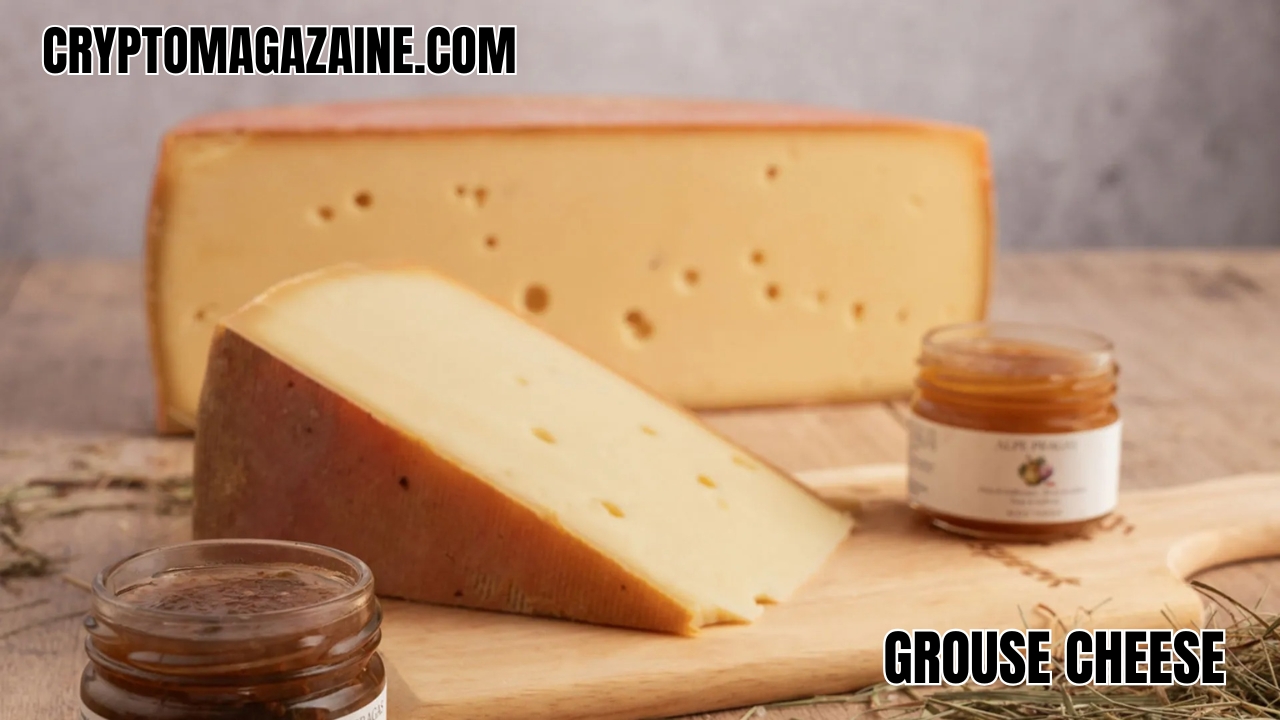When it comes to gourmet cuisine, few things excite the palate like the discovery of something truly unique — and Grouse Cheese is one such treasure. While the name may not be familiar to every food lover, it combines the rustic richness of traditional dairy craftsmanship with the bold, gamey inspiration of wild flavors. In this article, we’ll explore the story, taste, and culinary applications of Grouse Cheese, and why it has become a name whispered among food connoisseurs who crave authenticity and creativity.
What Is Grouse Cheese?
Grouse Cheese refers to a distinctive variety of artisanal cheese inspired by the flavor profiles of grouse, a game bird commonly found in the heaths and moors of northern Europe. Although not made from the bird itself, Grouse Cheese takes its name from the bold, earthy flavors associated with the grouse’s natural environment.
This cheese is often crafted to complement the robust taste of game meats — particularly grouse, pheasant, and venison. Its characteristically nutty, slightly smoky, and aged flavor pairs perfectly with strong wines, dried fruits, and roasted dishes.
Some small-batch cheesemakers have even experimented with infusing cheeses with herbs found in grouse habitats, such as heather, juniper, and thyme, creating a sensory experience that evokes the wild moorlands.
The Origins of Grouse Cheese
The idea of Grouse Cheese finds its roots in the long-standing European tradition of pairing local game with local dairy. In regions like Scotland and northern England — where grouse hunting is part of the cultural heritage — cheesemakers began producing aged, savory cheeses that would pair beautifully with roasted game.
These cheeses were typically made from cow’s or sheep’s milk and aged in cellars that maintained cool, earthy conditions. Over time, cheesemakers refined their recipes, enhancing the flavor through natural aging and subtle additions of herbs or smoke to mirror the environment of the grouse.
While there isn’t a single origin farm or factory producing “official” Grouse Cheese, the concept has gained traction in modern artisan markets, where creative cheesemakers continue to push the boundaries of traditional dairy craftsmanship.

The Flavor Profile of Grouse Cheese
What makes Grouse Cheese stand out is its deep, layered flavor. Unlike mild, creamy varieties, Grouse Cheese delivers a complex taste experience:
- Texture: Firm yet creamy when sliced, often featuring a natural rind.
- Aroma: Earthy, slightly smoky, and reminiscent of forest herbs or moorland grasses.
- Taste: A balance of nutty sharpness and savory richness, with subtle notes of herbs and aged milk.
For many, Grouse Cheese captures the feeling of sitting by a fire in a countryside lodge after a long day outdoors — it’s hearty, comforting, and distinctly rustic.
Pairing Grouse Cheese with Food and Drink
Grouse Cheese is a dream ingredient for chefs and home cooks alike, especially when crafting sophisticated, nature-inspired dishes. Here are some of the best ways to enjoy it:
- With Game Dishes: Pair Grouse Cheese with roasted grouse, duck, or venison for an elevated dining experience.
- In Cheese Boards: Add it alongside other bold cheeses like aged cheddar or smoked gouda, with accompaniments like fig jam, walnuts, and rye crackers.
- In Cooking: Melt Grouse Cheese over grilled vegetables or in baked casseroles to introduce a smoky, umami layer of flavor.
- With Wine: Robust red wines such as Syrah, Cabernet Sauvignon, or Malbec bring out its depth, while a peaty Scotch whisky enhances its earthy notes.
The cheese’s versatility allows it to transition seamlessly from rustic dinners to high-end tasting menus, proving that its unique taste appeals to a wide range of palates.
Grouse Cheese in Modern Cuisine
With the rise of artisanal food movements, Grouse Cheese has found new admirers among chefs and food enthusiasts seeking authenticity and originality. It fits perfectly into today’s culinary philosophy, which emphasizes sustainable farming, regional ingredients, and slow food preparation.
Some boutique cheesemakers now market Grouse Cheese as a limited-edition seasonal product, often available during hunting season when the association with game is strongest. Its rarity and handcrafted nature make it a sought-after delicacy for those who appreciate quality over quantity.

The Art of Making Grouse Cheese
The creation of Grouse Cheese is a meticulous process that involves balancing tradition with creativity. While each producer has their own methods, the general process includes:
- Sourcing High-Quality Milk: Usually from grass-fed cows or sheep raised in natural, open pastures.
- Curdling and Draining: The milk is curdled using rennet, and the curds are carefully drained to achieve the right firmness.
- Infusion and Aging: Some cheesemakers infuse the curds with herbs like juniper or thyme before aging them for several months.
- Natural Rind Formation: The cheese is aged in a controlled environment, allowing a natural rind to develop, enhancing the earthy character.
- Finishing Touches: Before packaging, wheels of cheese may be brushed with oil, smoke, or even ash to deepen the flavor.
The end result is a beautifully aged, flavorful cheese that reflects the terroir — the natural characteristics of the land and environment from which it originates.
Grouse Cheese Around the World
Though its inspiration lies in northern Europe, the idea of Grouse Cheese has inspired international variations. Artisans in the United States, France, and Scandinavia have created their own versions, often incorporating local herbs or smoking techniques.
For example:
- In Scotland, Grouse Cheese is often aged in whisky barrels for a subtle smoky note.
- In France, it may take on a softer, creamier texture similar to tomme-style cheeses.
- In America, modern dairies experiment with small-batch Grouse Cheese infused with wild herbs or local honey.
Each version pays tribute to the same idea — celebrating the connection between nature, flavor, and craftsmanship.
Nutritional Value of Grouse Cheese
Like many aged cheeses, Grouse Cheese provides a rich source of calcium, protein, and essential fats. It is naturally high in vitamins A and B12, which support energy and bone health. However, because of its strong flavor, it’s typically enjoyed in moderation — a small piece can deliver a big taste.
Those following a gourmet or Mediterranean diet often include it as part of a balanced, indulgent meal.
Why Grouse Cheese Is Loved by Food Connoisseurs
Food lovers appreciate Grouse Cheese not only for its flavor but also for the story it tells. It’s a symbol of craftsmanship, heritage, and respect for natural ingredients. In a world dominated by mass-produced foods, Grouse Cheese stands out as a celebration of individuality and artistry.
It embodies what fine dining should be — authentic, bold, and memorable.
How to Buy and Store Grouse Cheese
Because Grouse Cheese is typically produced in small batches, it’s often sold through artisan markets, specialty food stores, or online gourmet shops. To preserve its flavor and texture:
- Store it in parchment or wax paper in the refrigerator.
- Keep it in a sealed container to maintain moisture.
- Allow it to reach room temperature before serving for the best taste experience.
Properly stored, Grouse Cheese can age gracefully, with its flavors deepening over time.
Final Thoughts
Grouse Cheese represents everything that makes artisanal food special — tradition, creativity, and an unbreakable connection to nature. Its bold flavor, rich history, and versatility make it a standout addition to any cheese board or gourmet recipe.
Whether you’re a chef seeking new inspiration or simply a curious foodie, exploring Grouse Cheese is a journey worth taking. Each bite tells a story of the land, the people, and the passion that go into creating something truly exceptional.






